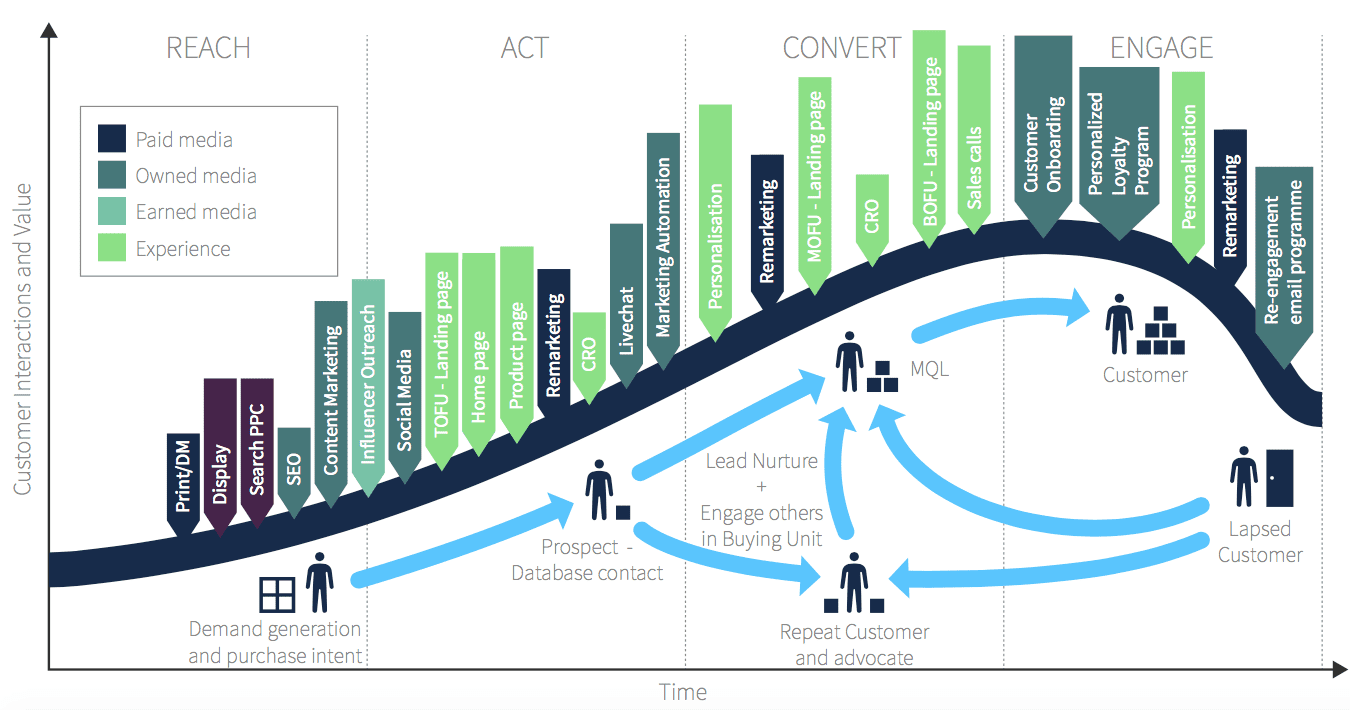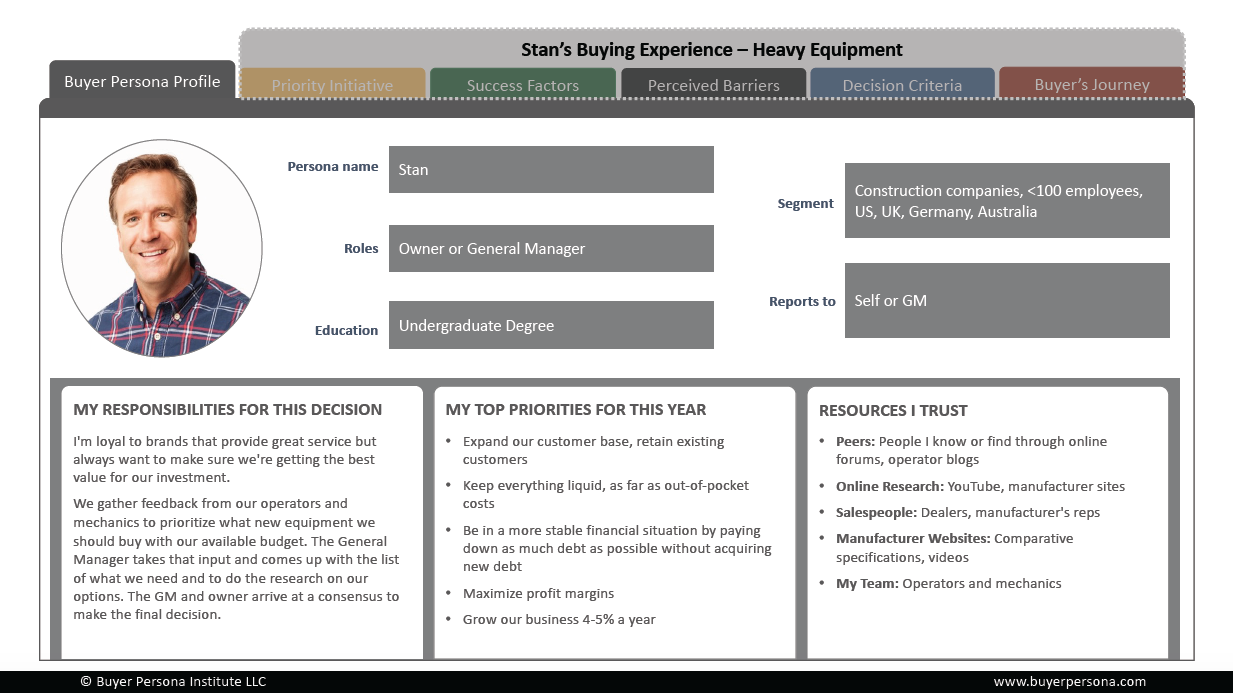The Comprehensive Guide to Multichannel Content Planning
We’re living in a world of rapid digital expansion. There are hundreds of potential channels online that you can use to reach your audience and new ones are appearing all the time.
For this reason, your audience is unlikely to spend all their time in one place when they’re online. Or, in other words, they’re not going online just to browse through their Facebook feed or read their emails.
Maybe one sector of your market spends a lot of time on Twitter. Maybe another keeps coming back to read your blog posts on your site week after week. The point is, if you try to focus on only one channel for your online content, you’ll almost certainly be missing out.
Today’s brands must take a multichannel approach to content planning to reach every segment of their audience in the most effective way possible. Perhaps more importantly, you should offer your customers a choice in how they interact with you so that you can meet them on their level.
What is Multichannel Marketing?
So what exactly are we talking about here? Multichannel marketing is basically how the vast majority of modern businesses plan and execute their content strategy. A multichannel digital content strategy involves planning, producing and publishing content on several online and offline channels, which may include:
- The main brand website
- Guest posts and features on other websites
- Display ads
- Emails
- Social media channels
- Print media
- Television advertising
- And so on…
Each of these channel “types” may have several individual channels that fit into the category; for example, you might include Facebook, Twitter, Instagram, and YouTube in your list of social media channels.
Multichannel content planning means deciding which channels and platforms you want to focus your content marketing efforts on and launching an integrated content marketing campaign across multiple channels at once.
A successful strategy will connect multiple channels into one unified marketing message, delivered through a content funnel tailored to each customer as illustrated in the graphic below.

As you might imagine, there’s a lot to plan and manage on each content channel you include in your strategy. So how should you approach multichannel content planning to give yourself the best chance at success?
1. Understand Your Audience
Before you even start thinking about the channels you want to include in your content marketing strategy, you must have a good understanding of your audience.
If you don’t know your audience, you won’t know where they spend their time online and how they interact with the different marketing channels you’re considering.
So, start by developing detailed customer personas of your different audience segments, and thinking about the marketing communication channels you can use to reach each segment most effectively.
Creating a customer persona will help you to build a picture of who exactly you’re speaking to when you craft your content. When you understand your audience better, you have better insight into which channels you can use to communicate with them.

2. Choose Your Content Marketing Channels
So, which channels should you use for content marketing? Owned content properties are a must, regardless of your industry or your audience.
For example, it’s almost always beneficial for a business to publish blog posts on their brand website. This helps to boost SEO and bring in search traffic, as well as providing a native-hosted, central location to link to from social media and other channels.
Likewise, email marketing is a worthwhile investment for most brands. An email has the potential to generate a higher ROI than any other marketing technique, and unlike many other channels, you “own” your audience. Platform algorithms on sites like Instagram and Facebook mean that only a small percentage of your followers will see your posts, but emails will reach everyone on your list, and, as long as they are relevant and of interest to the receiver, you should achieve an impressive open rate.
Beyond this, it’s a case of choosing the channels on which your audience spends the most time, and maybe experimenting with a few new up-and-coming channels from time to time, too. TikTok is an example of one of these new upstarts and is being billed as the platform to watch by some marketers. Whether this prediction becomes reality remains to be seen!
There are hundreds of social media platforms, and it would take too much time and too many resources to effectively target even just the top 10. Instead, you should choose a handful to concentrate your efforts on, based on the research you gathered during the customer profile phase.
LinkedIn works well for B2B audiences, while Facebook tends to be better for B2C. Pinterest users are primarily female, and Snapchat’s main user demographic tends to be people in their teens or early 20s. Take the time to figure out which platforms your users are active on, and concentrate on those.

3. Define Your Goals
Your content marketing plan is useless without clear, measurable, and realistic goals.
It’s also important to ensure that your content marketing goals align with your overall business goals – there’s no point having the aim of increasing traffic to your site if you don’t have a plan in mind to do something with that traffic.
Your goals might be very specific (increase conversions from a specific campaign by 5%, for example) or they might be more general (such as increasing engagement for a particular segment of your market).
Either way, your goals must be clear and measurable. If you only have very vague and general goals, it can be difficult to know when you’ve achieved them, or exactly what work you need to do to get there.
4. Plan and Customize Your Content for Each Channel
Once you’ve decided which channels you’ll be leveraging, it’s important to think carefully about the type of content you will publish on each channel.
In some cases, this is obvious (YouTube is a natural fit for video), but you may need to do a little more research and investigation of your own to figure this out. Maybe your followers on LinkedIn like to read long-form thought-leadership pieces, while Facebook followers respond better to infographics.
And remember, the whole point of multichannel marketing is that each of your channels is working together, so you don’t have a completely different content strategy for each platform. Rather, you plan out how each channel can be used to support and distribute your stories. Maybe you can publish a post to your blog, promote it on Facebook and Twitter, and create a related short video to publish on YouTube.
5. Stay on Track With a Content Calendar
When you’re publishing multiple versions of content across several different platforms, it can get confusing quickly, especially when you’re dealing with different writers, influencers, and social media managers.
This is why a content calendar is essential to help you to plan out your content in advance and to make sure you don’t fall behind schedule. You can also ensure that your content ties in with your other marketing activities and important dates in your business calendar.
Automation can also be incredibly helpful to save you time and remove some repetitive tasks from your team’s workload. An automation tool can cross-promote your content across several different channels, and even guide a prospect through your marketing funnel (for example, by triggering an email when they take a specific action on your website.)
6. Monitor, Review, and Optimize
Just because you’ve chosen certain channels for good reasons in the early stages of this process doesn’t necessarily mean they’re the right options in the long term.
Moreover, it can take some time to figure out the best way to engage with your audience on certain platforms. Simple things such as the time you post a social update or send out an email can make a huge difference to your engagement levels.
Make sure you’re recording important metrics such as click-through rates, engagement, brand mentions, and conversions from the start, and take note of how these are affected by other factors such as a cross-channel promotion or paid advertising.
You’ll soon begin to build a picture of how your integrated content strategy is performing, and with constant monitoring and experimentation you can optimize your strategy as you go.
7. Tying it All Together With a Content Platform
There are so many moving parts that go into getting this process right: content planning, collaboration, scheduling, automation, and analytics, to name just a few. This is where a content marketing platform can prove its worth by acting as a central management hub for all your content marketing activities across multiple platforms.
If you’d like to find out more about how DivvyHQ can streamline your multichannel content planning and enable you to track performance across multiple platforms in real-time, get in touch to find out more and book a demo.

